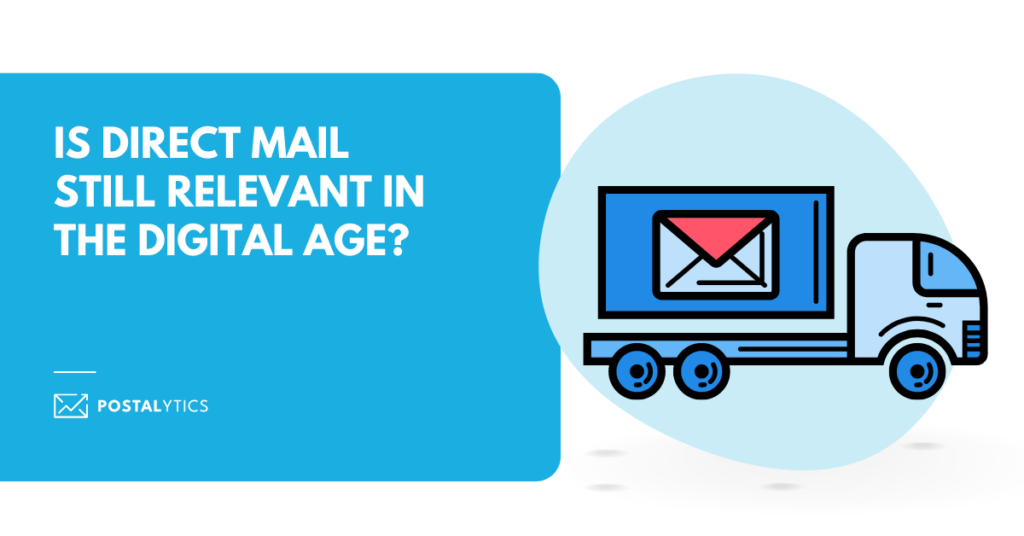
As the leading direct mail automation platform, we spend a lot of time researching the importance of direct mail in our digital age.
We’re living in a world dominated by digital communication. But despite the prevalence of email, social media, and text messaging, there’s still a surprisingly powerful player in the game: direct mail. Digital communication is easy and inexpensive. Many companies concentrate their marketing efforts on only digital channels, and direct mail is perceived as slow and out-of-date. So why should businesspeople consider direct mail in the digital age? Let’s find out.
What We’ll Cover:
A Better Response Rate
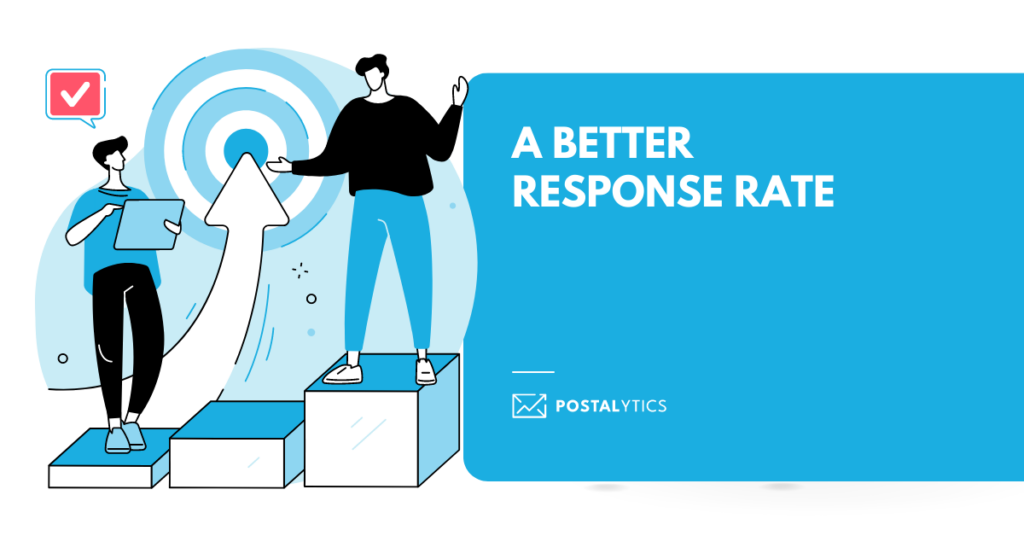
While digital marketing methods are often cheaper and easier to execute, direct mail consistently boasts higher response rates. According to the Data & Marketing Association, direct mail response rates can be as high as 9% for house lists and 4.9% for prospect lists. Compare that to 1% response for email, 1% for paid search, and 0.3% for social media. That’s a significant difference! For getting your message seen but also acted upon, direct mail clearly has the upper hand.
With consumers constantly bombarded by digital advertisements, emails, and social media notifications, it’s easy for your message to get lost in the noise. But when a well-designed, printed piece of mail arrives at someone’s doorstep, it commands attention. The tactile experience of holding and opening physical mail makes it more memorable and impactful than just another digital message.
Personalization Matters
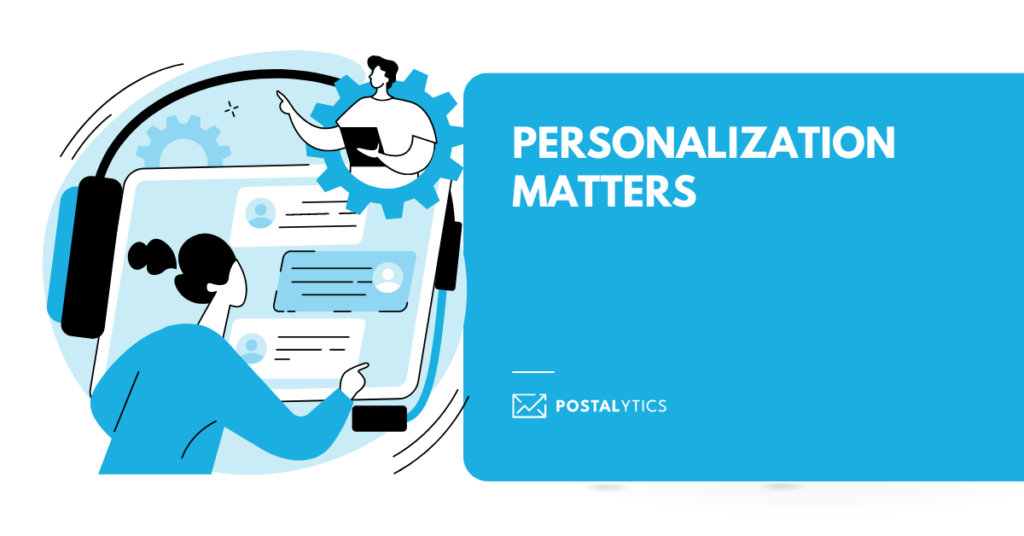
Direct mail allows for an unmatched level of personalization. People love feeling special and direct mail can deliver that personalized touch. This level of customization helps build trust and loyalty with your audience, ultimately leading to higher conversion rates and long-term business relationships.
Some people equate direct mail with “mass mailing” or “bulk mail” – a process where marketers create one mailpiece and send it to everyone on the mailing list. Marketers rarely resort to this outdated strategy anymore. Today’s direct mail is more likely to be a one-to-one unique communication between your organization and your customers. Today, businesses can harness the power of data and technology to create highly targeted campaigns that resonate with their audience. With the ability to personalize everything from the design and message to the offer and even the timing, direct mail has become a powerful tool in the modern marketer’s arsenal.
By leveraging your customer data, you can segment your audience based on factors like demographics, purchase history, and preferences, allowing for more relevant and impactful messaging. Combine this with variable printing technology, and you have a strategy for direct mail that not only stands out but also drives results. So, yes, direct mail can be personalized, and it’s this personal touch that gives it an edge in the digital age.
Target the Right People
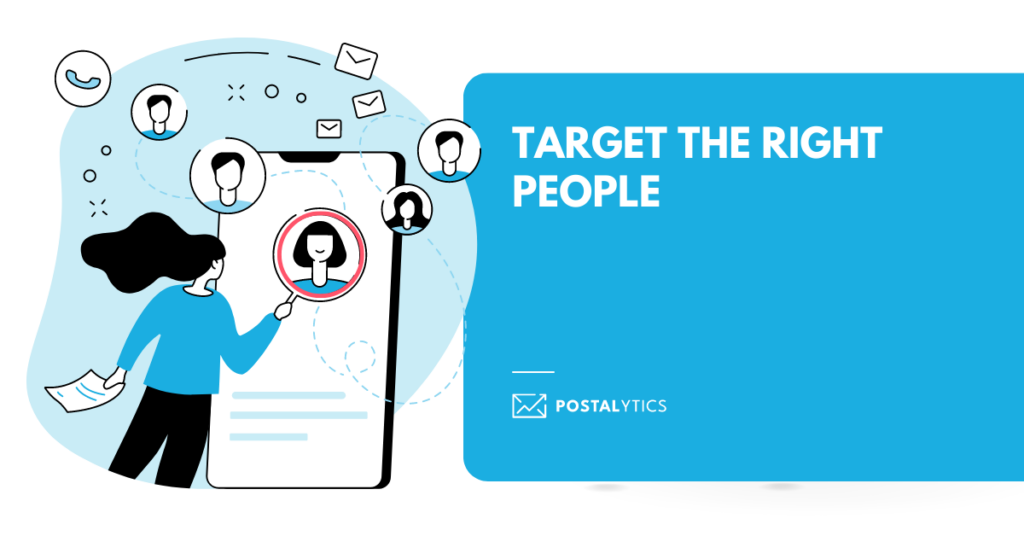
One of the key factors in any successful marketing campaign is reaching the right audience. Direct mail allows businesses to target their ideal customer demographics with precision, ensuring that their message lands in the hands of those most likely to engage with their brand. The result? A more effective and efficient use of marketing resources.
Targeting the right audience with direct mail is crucial for achieving maximum impact and reducing waste. It’s all about knowing your customers and sending them personalized, relevant materials that speak directly to their needs and interests.
Segmentation makes your direct mail campaign a success. This involves dividing your customer base into smaller, more targeted groups based on factors like demographics, buying history, and interests. Here’s how you can do it:
- Define your target audience:
Identify the demographic, geographic, and psychographic characteristics of your ideal customers. Consider factors such as age, gender, income, location, interests, and past purchases. Individuals who don’t match your criteria should be stricken from the mailing list. Why spend the money to send mail to people who are unlikely to be interested in your offer?
- Collect and analyze customer data:
Gather information about your current customers, including transaction history, communication preferences, and engagement with your brand. Analyze this data to find trends and patterns. You may want to communicate differently with long-term customers and repeat buyers than with those who recently purchased for the first time.
- Create customer segments:
Based on your analysis, divide your customers into distinct groups that share common characteristics or behaviors. These segments will allow you to tailor your direct mail campaigns for the greatest impact. Segments can be based on nearly any criteria. Separate businesses from consumers, urban from rural, high credit scores from low scorers, or men from women. Anytime you believe a different presentation or offer will affect a group of customers, make them a segment.
- Develop targeted messaging and offers:
Create compelling and relevant mail piece versions, one for each customer segment. Address specific customer needs and preferences. Personalize your segment-specific direct mail pieces to increase engagement and response rates. Mail piece versions may vary in color palettes, offers, text, or images. Use the direct mail designer built into Postalytics to create all the templates you need. Personalization might include references to past purchases, length of time as a customer, date of last transaction, loyalty point balance, neighborhood references, address of the nearest retail store, etc.
- Monitor and adjust your strategy:
Track the performance of your direct mail campaigns, measuring key metrics such as response rates, conversion rates, and return on investment. Use this data to refine your segmentation and targeting strategies over time. Use coupon codes, offer codes, QR codes, personal URLs, or dedicated phone numbers to identify the source of each customer’s response to segmented direct mail campaigns.
Direct Mail’s Impact on Multi-Channel Marketing
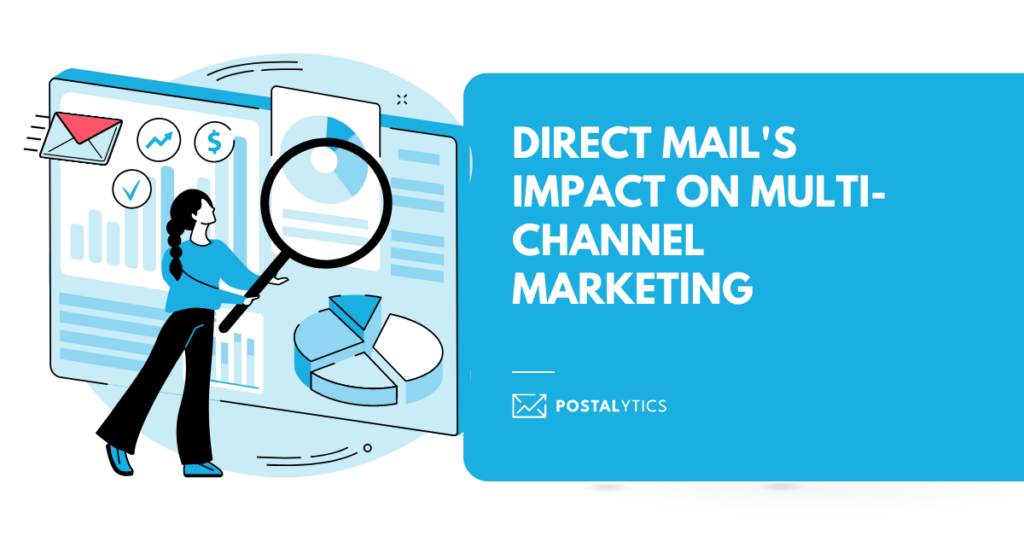
Combined, the power of direct mail with digital marketing channels creates results that exceed the performance of any single-channel campaign. By engaging your audience through multiple channels, you’re more likely to capture their attention and drive results. Direct mail is especially effective in driving traffic to online destinations. Customers can browse for products, watch a video, download written content, make a donation, connect on social media, open an online account, and more.
One approach for combining digital messaging with printed direct mail is to send a direct mail piece first and follow up with a series of emails. The mail piece stands out and establishes awareness and the subsequent emails, using the same theme and colors, foster familiarity with the brand.
One advantage of web-based content is its ability to be interactive. Marketers can drive customers to interactive landing pages by promoting contests or registering for free items available by filling out a form online.
When a multi-channel campaign begins with direct mail, the initial piece can introduce some intrigue. Pose a question or suggest a mystery to be solved by following the call to action and learning more online.
Why Direct Mail is More Memorable Than Digital Advertising
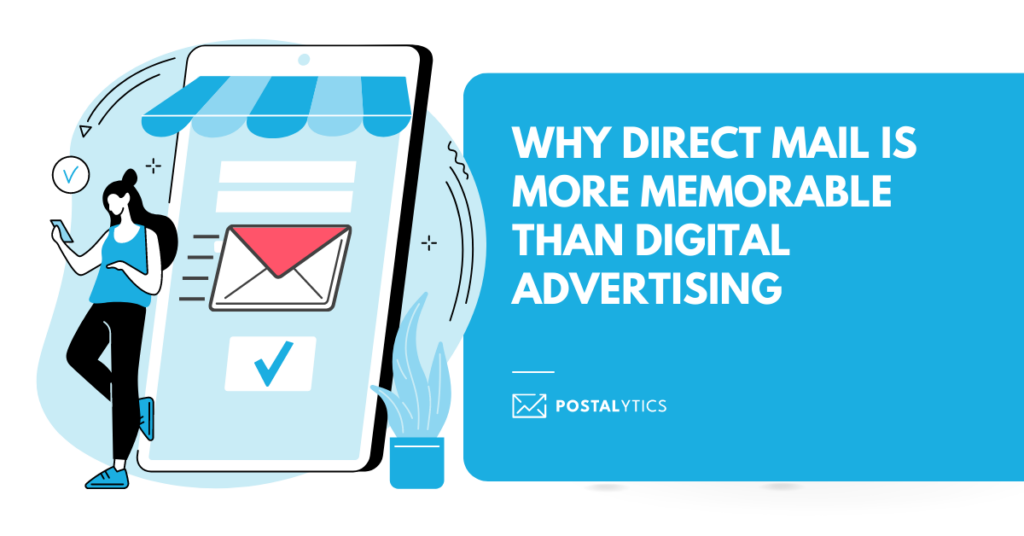
Think back to the last time you received an interesting piece of direct mail. Recall the feel of the paper, the excitement of opening the envelope, and the sense of curiosity as you read through the contents. That you have a specific memory speaks to the impact of a mail piece you held in your hand. Now, compare that with the countless digital advertisements you scroll past on your phone or computer screen daily. There’s something inherently more memorable about direct mail, and that’s why it continues to be a powerful marketing tool in the digital age.
Physicality Counts
One reason direct mail is more memorable than digital advertising is its physical presence. A tangible piece of mail creates a deeper connection with the message, as opposed to an easily dismissed digital ad. Studies have shown that people retain information better when it’s presented on paper compared to a screen, making direct mail a more effective way to get your message across to your audience.
Scientific studies tell us our brains have a natural affinity for tangible items, making it easier to process physical materials compared to their digital counterparts. This article in Forbes explains how it works.
Direct Mail vs. Digital Advertising: Which Is Better?
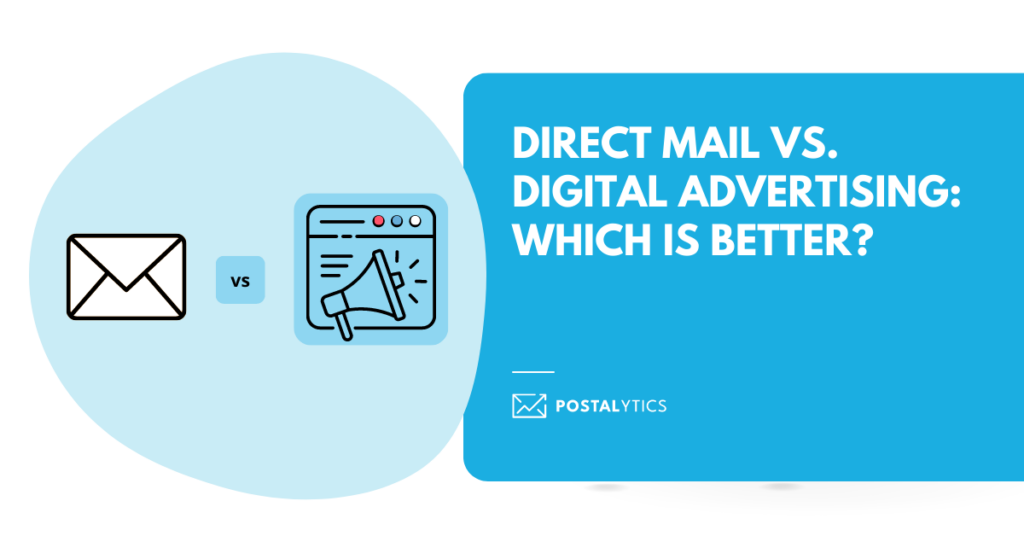
In marketing, the age-old debate between direct mail and digital advertising is still alive and kicking. But the real question is: which one should you invest in for your small or medium-sized business?
While digital advertising might seem like the obvious choice in today’s tech-savvy world, direct mail is far from obsolete. In fact, when used strategically as part of a multi-channel marketing approach, it can deliver impressive results that can rival or surpass those of digital campaigns.
One of the major advantages of direct mail is its tangible nature. We live in an era where our inboxes are overflowing with promotional emails that are often ignored or deleted without even being opened. On the other hand, a well-designed, personalized, and targeted direct mail piece can create a lasting impression simply because it’s a physical item that recipients can touch, feel, and keep as a reminder of your brand. Direct mail is more likely to be opened, read, and shared than email.
But don’t take this as a sign to abandon your digital marketing efforts altogether. In reality, the ultimate recipe for success lies in combining both direct mail and digital advertising to create a seamless and memorable customer journey.
Both direct mail and digital advertising have their merits, and neither should be dismissed outright. Leverage the strengths of both methods and adapt your strategy to your target audience. You can create a powerful and effective marketing mix that will help your small or medium-sized business thrive in this competitive landscape.
About the Author

Dennis Kelly
Dennis Kelly is CEO and co-founder of Postalytics. Dennis joined Boingnet, the predecessor to Postalytics, in 2013. Boingnet was focused on providing print and direct mail marketing service providers the ability to add digital marketing channels to their direct mail campaigns. Postalytics is Dennis’ 6th startup. He has been involved in starting and growing early-stage technology ventures for over 30 years and has held senior management roles at a diverse set of large technology firms including Computer Associates, Palm Inc. and Achieve Healthcare Information Systems.
